
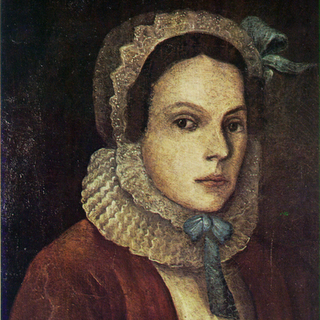 Mendeleev’s mother, Maria Mendeleeva, was the dominant influence in his young life.
Mendeleev’s mother, Maria Mendeleeva, was the dominant influence in his young life.
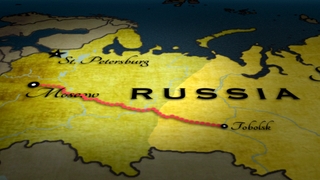 When he was 15, Mendeleev’s mother took him on a 1,500-mile trip by horse-drawn sleigh to find a school for him. She died a few months later.
When he was 15, Mendeleev’s mother took him on a 1,500-mile trip by horse-drawn sleigh to find a school for him. She died a few months later.
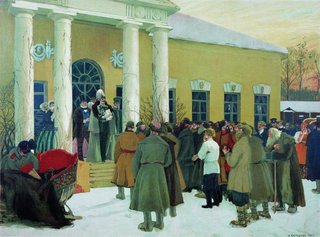 The 1861 emancipation of Russia’s serfs triggered years of social upheaval, closed the universities and forced Mendeleev to scrape together a living by, among things, writing a textbook.
The 1861 emancipation of Russia’s serfs triggered years of social upheaval, closed the universities and forced Mendeleev to scrape together a living by, among things, writing a textbook.
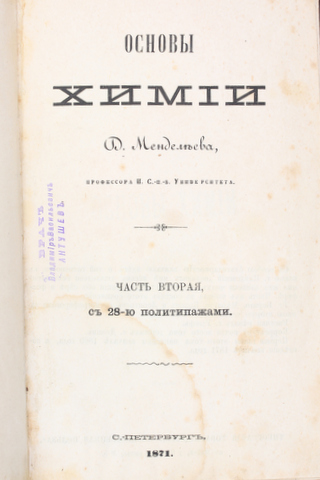 Mendeleev created the Periodic Table while struggling to organize his textbook, Principles of Chemistry.
Mendeleev created the Periodic Table while struggling to organize his textbook, Principles of Chemistry.
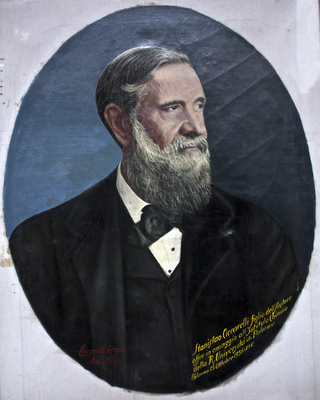 At the 1860 Karlsruhe Congress, Italian chemist Stanislao Cannizzaro made the case for a new system of atomic weights.
At the 1860 Karlsruhe Congress, Italian chemist Stanislao Cannizzaro made the case for a new system of atomic weights.
 In his 1869 Periodic Table, Mendeleev left blanks with suggested atomic weights for elements he thought would be discovered someday.
In his 1869 Periodic Table, Mendeleev left blanks with suggested atomic weights for elements he thought would be discovered someday.
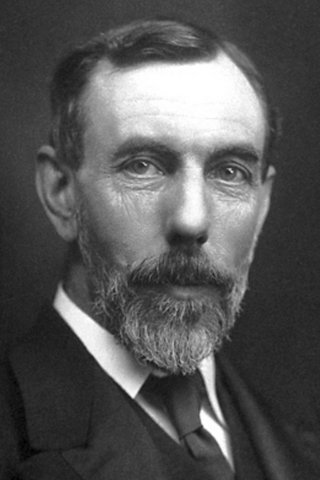 William Ramsay’s discovery of argon initially posed a threat to the Periodic Table.
William Ramsay’s discovery of argon initially posed a threat to the Periodic Table.
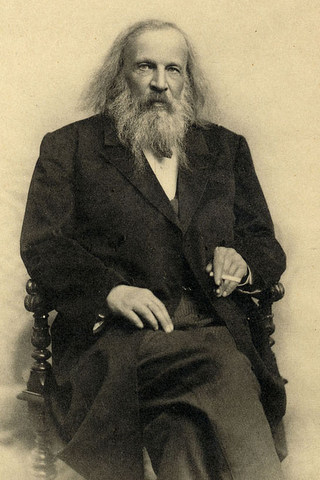 At first, Mendeleev believed argon was not an element, because it didn’t react with anything. Argon and the rest of the noble gases eventually proved to be a powerful confirmation of his periodic system.
At first, Mendeleev believed argon was not an element, because it didn’t react with anything. Argon and the rest of the noble gases eventually proved to be a powerful confirmation of his periodic system.
Chemistry in Crisis
In the mid-1800s, when Dmitri Mendeleev was just beginning his studies, chemistry was a field in crisis. The number of known elements had nearly doubled in the last half-century, and while each discovery was cause for excitement, there seemed to be no rhyme or reason to them. While physicists were busily formulating precise laws to explain the workings of nature, chemists seemed more like naturalists or stamp collectors – consigned to cataloging an ever-rising number of substances. Where was the order, the simplicity, that scientists strive for?
It finally came in 1869 in the form of the Periodic Table, which arranged the known elements in a sensible order, showed how they were related to each other, and pointed the way to new discoveries. But the author of the table was a complete surprise – not a leading chemist from London, Paris or Berlin, but a young, unheralded professor from the Russian boondocks.
A Life of Hardship
It’s hard to imagine a more improbable savior. Mendeleev was born in 1834 in Tobolsk, Siberia, an industrial city more than a thousand miles east of Moscow. The youngest of a dozen or more children (no one is quite sure how many), he endured a life of hardship and struggle. His father, the headmaster at the local high school, went blind during the year of Dmitri’s birth. The glass factory his mother ran to support the large family burned down when he was 14. The next year, his mother took him on a 1500-mile trip by horse drawn sleigh in search of a school that would accept him – and died a few months after he landed a spot in a St. Petersburg teacher training school.
Mendeleev thrived in St. Petersburg and earned a chance to pursue graduate studies in Germany, but two weeks after he returned home, the czar emancipated the serfs, ending the Russian equivalent of slavery and triggering years of social upheaval. With the universities closed, Mendeleev was forced to scrabble together a living for six years. Not until 1867, at age 33, did he finally land a coveted spot at St. Petersburg University. There, at last, Mendeleev’s considerable talents were unleashed.
Organizing a Textbook
One of his new responsibilities was to teach introductory chemistry. Unhappy with the existing Russian chemistry textbooks, Mendeleev set out to write his own – Principles of Chemistry, in two volumes. He had completed the first volume and the first two chapters of Volume 2 when he came to an impasse: He needed a way to organize the rest of his book. The only way to do it, he decided, was to organize the elements themselves. As he grappled with this challenge over one weekend in February 1869, Mendeleev made a discovery for the ages – a table that would one day hang in every chemistry classroom in the world.
Previous Attempts
Chemists had been trying to organize the elements for more than 50 years. They’d been stymied by disagreements over the atomic weights of the elements – the amount an atom of each element weighed. But in 1860, chemists organized their first ever international congress in Karlsruhe, Germany, where an Italian chemist named Stanislao Cannizzaro laid out a persuasive case for a new, uniform system of atomic weights.
After Karlsruhe, five different European scientists detected signs of a hidden mathematical order among the elements: If the elements were arranged in order of atomic weight, every so often their chemical properties would repeat – a pattern we now call “periodicity.” But none of these men could put together a system that encompassed all 63 of the known elements. That’s where things stood when Mendeleev finally landed his job at St. Petersburg university and set out to write his textbook.
Focusing on Chemical Families
Mendeleev had covered just eight elements in the first volume of his textbook. Needing a more efficient way to cover the remaining 55 elements in Volume 2, Mendeleev decided to focus on chemical families – groups of elements with similar chemical properties. When he looked at the atomic weights of the elements in these families, he found a striking pattern. “He notices that there’s a regularity in the differences,” explains biographer Michael Gordin. “That is, the changes that happen within a family happen regularly across families. And that’s the fundamental insight that gets him thinking about how to organize all the other elements.”
Excited, Mendeleev set out to organize all the elements by arranging them in order of rising atomic weight, but occasionally skipping a spot or reversing two elements to keep them in the same columns as other members of their families. “Mendeleev had begun the weekend trying to solve the problem of what to do next in his textbook,” says author Eric Scerri. “But having reached this aha moment, he dropped everything else, and he poured all his energy into revealing an absolutely fundamental principle of nature.”
Bold Predictions
By Monday evening, Mendeleev had completed his table. He ordered 200 copies printed and sent to Europe’s leading chemists. Unlike the others who had sought an order among the elements, Mendeleev believed his table reflected a law of nature: that the properties of the elements are determined by their atomic weights, and vary in a regular, periodic way across the table. His belief in the Periodic Law gave Mendeleev the courage to make detailed predictions about three of the “missing elements” for which he’d left room in his table. “Within 15 years all three of the detailed predictions are discovered. And that catapults Mendeleev to chemical superstardom,” Gordin says.
Noble Gases
But in 1894, two British scientists made a discovery that threatened to bring Mendeleev’s carefully crafted edifice crashing down. They found a new gas they called argon that didn’t seem to fit into the table. Argon behaved like no other gas anyone had ever encountered. Chemists couldn’t get it to react with anything – it was inert. So Mendeleev concluded it wasn’t an element at all. But then William Ramsay announced he’d also isolated helium, a gas that had first been detected in the spectrum of the sun 30 years earlier. It was definitely an element, but there was no space for it in the table.
For a time it seemed like Mendeleev’s table might be in real trouble. But three years later, Ramsay isolated three new gases – krypton, xenon and neon. They displayed the same chemical properties as argon and helium – and the same regular increase in atomic weights that other chemical families did. “And so Mendeleev makes the single, biggest revision to the system he ever did,” Gordin says. “He puts in a new column. And that is the family of noble gases.”
“It turned out to be a vindication of the periodic system, and, if anything, made it even more profound a discovery,” Scerri says.
While more than 50 new elements have been discovered since Mendeleev created his first table, the basic organizing principles of the table remain intact. The table that hangs in chemistry classrooms all over the world today is a direct descendant of the table Mendeleev drafted over that weekend in 1869.
Want to Learn More?
To see the full Mendeleev story, select Watch Online to go to pbs.org/mysteryofmatter and watch Episode 2. Or click on Buy to purchase the series DVD at ShopPBS. For more resources about Dmitri Mendeleev’s life and career, select Learn More.
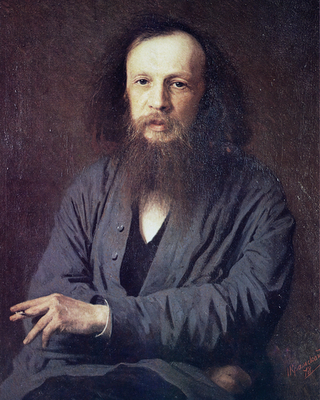 Dmitri Mendeleev
Film Clip: Chemistry’s Unruly Garden - By the middle of the 19th century, scientific instruments like the battery and the spectroscope have led to a confusing proliferation of elements. Something is needed to bring order to chemistry’s unruly garden.
Film Clip: Confusion over Atomic Weights - Disagreement over the atomic weights of the elements prompts chemists to hold their first international conference in 1860. It leads to the first consistent set of weights and triggers efforts to organize the elements.
Film Clip: Organizing by Families – Focusing on a few well-known “chemical families,” Mendeleev finds a striking mathematical pattern in their atomic weights and set outs to see if this clue will allow him to organize all the known elements.
Video: Chemical Solitaire – Some scholars dispute the legend that Dmitri Mendeleev arrived at the Periodic Table by playing a kind of “chemical solitaire” with cards on which he had written the names and weights of the elements. But the card game is a good analogy for how Mendeleev did build his table.
Video: The Legend of Mendeleev's Dream – One oft-told tale about the Periodic Table is that it came to Dmitri Mendeleev in a dream. But the historical record shows that the table resulted from hard work and struggle.
Sound Bite: Mendeleev’s Weird Idea – Biographer Michael Gordin explains Mendeleev’s “weird idea” that nature would not have left any spaces in his table empty.
Video: Other Discoverers of the Periodic Table - While Dmitri Mendeleev gets most of the credit for creating the Periodic Table, five other men sensed a hidden order among the elements before he did. He gets the credit because only he was bold enough to make detailed predictions about the elements missing from his table.
Video: Mysteries of the Periodic Table, Part 4: The Noble Gases - The discovery of the noble gases initially posed a threat to the Periodic Table, then a powerful confirmation of Mendeleev’s Periodic Law. The gases’ inertness eventually explained much about chemistry.
Video: The Element Mendeleev Never Accepted - Dmitri Mendeleev’s grasp of chemistry was so great that he could accurately predict the properties of three of the “missing” elements in his Periodic Table. But there was one new element Mendeleev could never accept: radium.
Video: Mysteries of the Periodic Table, Part 5: Isotopes - For six decades after the creation of the Periodic Table, chemists were baffled by cases where a heavier element came before a lighter one in the table. The puzzle was solved only after the discovery that different atoms of the same element can have different weights: isotopes.
Dmitri Mendeleev
Film Clip: Chemistry’s Unruly Garden - By the middle of the 19th century, scientific instruments like the battery and the spectroscope have led to a confusing proliferation of elements. Something is needed to bring order to chemistry’s unruly garden.
Film Clip: Confusion over Atomic Weights - Disagreement over the atomic weights of the elements prompts chemists to hold their first international conference in 1860. It leads to the first consistent set of weights and triggers efforts to organize the elements.
Film Clip: Organizing by Families – Focusing on a few well-known “chemical families,” Mendeleev finds a striking mathematical pattern in their atomic weights and set outs to see if this clue will allow him to organize all the known elements.
Video: Chemical Solitaire – Some scholars dispute the legend that Dmitri Mendeleev arrived at the Periodic Table by playing a kind of “chemical solitaire” with cards on which he had written the names and weights of the elements. But the card game is a good analogy for how Mendeleev did build his table.
Video: The Legend of Mendeleev's Dream – One oft-told tale about the Periodic Table is that it came to Dmitri Mendeleev in a dream. But the historical record shows that the table resulted from hard work and struggle.
Sound Bite: Mendeleev’s Weird Idea – Biographer Michael Gordin explains Mendeleev’s “weird idea” that nature would not have left any spaces in his table empty.
Video: Other Discoverers of the Periodic Table - While Dmitri Mendeleev gets most of the credit for creating the Periodic Table, five other men sensed a hidden order among the elements before he did. He gets the credit because only he was bold enough to make detailed predictions about the elements missing from his table.
Video: Mysteries of the Periodic Table, Part 4: The Noble Gases - The discovery of the noble gases initially posed a threat to the Periodic Table, then a powerful confirmation of Mendeleev’s Periodic Law. The gases’ inertness eventually explained much about chemistry.
Video: The Element Mendeleev Never Accepted - Dmitri Mendeleev’s grasp of chemistry was so great that he could accurately predict the properties of three of the “missing” elements in his Periodic Table. But there was one new element Mendeleev could never accept: radium.
Video: Mysteries of the Periodic Table, Part 5: Isotopes - For six decades after the creation of the Periodic Table, chemists were baffled by cases where a heavier element came before a lighter one in the table. The puzzle was solved only after the discovery that different atoms of the same element can have different weights: isotopes.